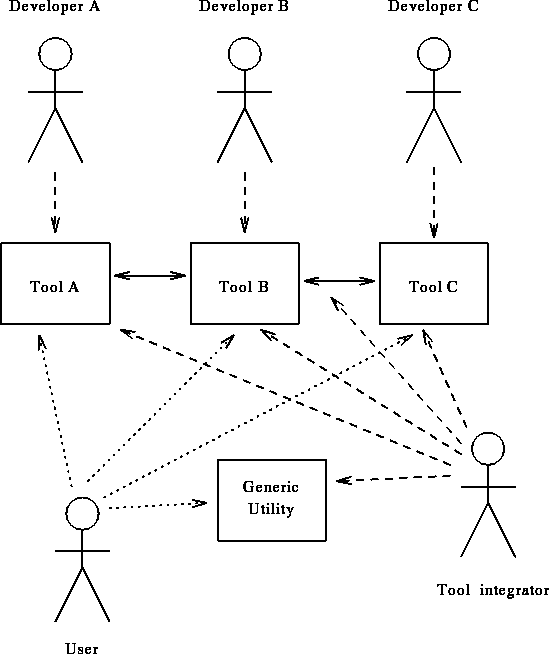2.3.1 Human Aspects of TCAD Methodology





Next: 2.3.2 Why Simulation is
Up: 2.3 Problem Analysis
Previous: 2.3 Problem Analysis
Methodology has two important facets, these are the application
of methodology and the development of methodology. Technology
CAD, as a methodology, also exhibits these two entirely different
facets .
TCAD is applied to solve device and
process design problems
and new or improved TCAD functionality is continuously created
to accommodate changing application requirements. So if one, with all
due right, complains the permanent lag of TCAD capabilities with
respect to the status of technology, the search for the
causes of this lag must include a thorough examination of the
dynamic methodology creation process
.
TCAD is applied to solve device and
process design problems
and new or improved TCAD functionality is continuously created
to accommodate changing application requirements. So if one, with all
due right, complains the permanent lag of TCAD capabilities with
respect to the status of technology, the search for the
causes of this lag must include a thorough examination of the
dynamic methodology creation process .
.
It has already been mentioned that the evolution of TCAD started with
single applications (point tools) that were designed and implemented
independently by different tool developers. A developer
(sometimes a small team of developers) has taken care for a single
application, which has traditionally been developed with an emphasis
on a specific TCAD application problem, usually without
consideration of the (software) environment in which the application will
be used.

Figure 2.3: Early integrated TCAD
The views of TCAD methodology of tool developer and user are
different. Developers have detailed, in-depth knowledge of a single
tool, or of part of a single tool, whereas users have shallow,
essential, problem-oriented knowledge of all tools used .
This is also valid when tools, for the advantage of users, are combined by
tool integrators into integrated TCAD systems
(see Figure 2.3).
.
This is also valid when tools, for the advantage of users, are combined by
tool integrators into integrated TCAD systems
(see Figure 2.3).
L.KLEINFELDT et al. [2]
identify the following categories of users
for the ECAD area.
- ``Designers - The ultimate end-users, people who execute CAD tools
in a formal or informal design methodology.
- Tool Developers - People who write new CAD tools for use by
designers.
- Tool Integrators - People who combine tools and hide dependencies
among tools. They also customize vendor tools to a specific site's
needs.
- Methodology Developers - Chief designer gurus who describe the
design methodology to be used.
- Managers - Those who supervise all of the above.''
For the TCAD area one might add the important
Model Developers (maybe a subclass of methodology developers)
who invent and calibrate new process and
device models.
Note that in this realistic model of TCAD methodology (Figure 2.3),
the constituent
system components are still essentially tied together by
human efforts.
While this might be acceptable as long as they are one-time
efforts, the maintenance of such a system is certainly a tedious and
redundant work.
of such a system is certainly a tedious and
redundant work.





Next: 2.3.2 Why Simulation is
Up: 2.3 Problem Analysis
Previous: 2.3 Problem Analysis
Martin Stiftinger
Thu Oct 13 13:51:43 MET 1994
 .
TCAD is applied to solve device and
process design problems
and new or improved TCAD functionality is continuously created
to accommodate changing application requirements. So if one, with all
due right, complains the permanent lag of TCAD capabilities with
respect to the status of technology, the search for the
causes of this lag must include a thorough examination of the
dynamic methodology creation process
.
TCAD is applied to solve device and
process design problems
and new or improved TCAD functionality is continuously created
to accommodate changing application requirements. So if one, with all
due right, complains the permanent lag of TCAD capabilities with
respect to the status of technology, the search for the
causes of this lag must include a thorough examination of the
dynamic methodology creation process .
.





